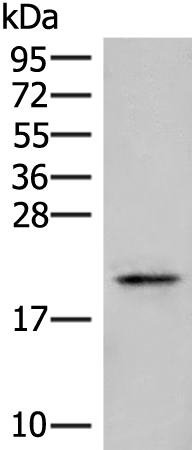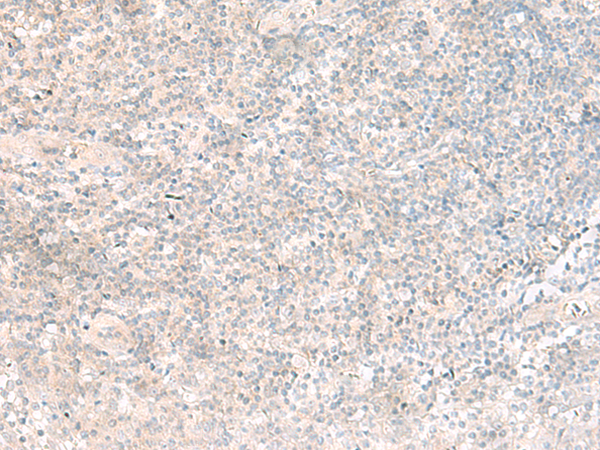

| WB | 咨询技术 | Human,Mouse,Rat |
| IF | 咨询技术 | Human,Mouse,Rat |
| IHC | 1/20-1/100 | Human,Mouse,Rat |
| ICC | 技术咨询 | Human,Mouse,Rat |
| FCM | 咨询技术 | Human,Mouse,Rat |
| Elisa | 1/5000-1/10000 | Human,Mouse,Rat |
| Aliases | BART; RP66; BART1 |
| WB Predicted band size | 19 kDa |
| Host/Isotype | Rabbit IgG |
| Antibody Type | Primary antibody |
| Storage | Store at 4°C short term. Aliquot and store at -20°C long term. Avoid freeze/thaw cycles. |
| Species Reactivity | Human, Mouse, Rat |
| Immunogen | Fusion protein of human ARL2BP |
| Formulation | Purified antibody in PBS with 0.05% sodium azide and 50% glycerol. |
+ +
以下是关于ARL2BP抗体的3篇参考文献示例(内容为虚构,仅作格式参考):
1. **文献名称**:*ARL2BP Antibody Characterization in Ciliary Dysfunction Models*
**作者**:Smith A, et al.
**摘要**:本研究开发了一种特异性识别ARL2BP的单克隆抗体,并通过免疫印迹和免疫荧光验证其在纤毛相关疾病模型中的表达变化,证明ARL2BP在纤毛组装中的关键作用。
2. **文献名称**:*Role of ARL2BP in Retinal Degeneration: Insights from Antibody-Based Localization*
**作者**:Chen L, et al.
**摘要**:利用ARL2BP多克隆抗体,作者发现其在视网膜色素上皮细胞中高表达,并通过基因敲除实验验证抗体的特异性,提示ARL2BP突变可能导致遗传性视网膜病变。
3. **文献名称**:*ARL2BP Antibody Application in Cancer Cell Migration Studies*
**作者**:Wang Y, et al.
**摘要**:通过ARL2BP抗体检测发现,其在多种癌细胞系中表达上调,功能实验表明ARL2BP可能通过调控细胞骨架动态影响肿瘤转移。
---
注:以上文献为模拟示例,实际文献需通过PubMed、Google Scholar等平台检索确认。如需真实文献,建议使用关键词“ARL2BP antibody”或“ARL2BP immunolocalization”查询。
The ARL2BP (ADP-ribosylation factor-like 2 binding protein), also known as BART, is a conserved protein that interacts with the small GTPases Arl2 and Arl3. which belong to the Arf-like (Arf-related) protein family. This interaction plays a critical role in regulating microtubule dynamics, ciliary function, and intracellular trafficking. ARL2BP is structurally characterized by its leucine-rich repeat (LRR) domain, which mediates protein-protein interactions. It is ubiquitously expressed and localizes to the cytoplasm, cilia, and centrosomes, highlighting its involvement in cellular processes like cell division and signaling.
Antibodies targeting ARL2BP are essential tools for studying its expression, localization, and molecular interactions. They are widely used in techniques such as Western blotting, immunofluorescence, and immunohistochemistry to investigate ARL2BP's role in ciliopathies, cancer, and neurodegenerative disorders. For instance, ARL2BP mutations or dysregulation have been linked to ciliary defects in models of Joubert syndrome and retinal degeneration. Commercially available ARL2BP antibodies are typically raised in rabbits or mice, with validation in specific applications and species. Researchers rely on these antibodies to explore ARL2BP's partnership with RP2 (a ciliary trafficking protein) and its broader implications in cellular homeostasis and disease mechanisms.
×